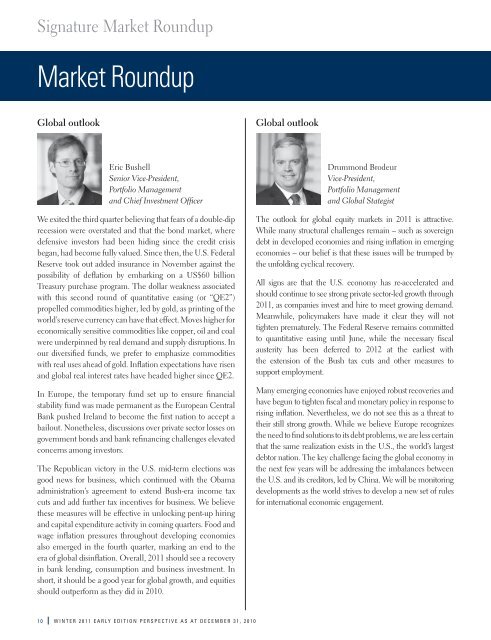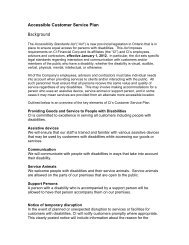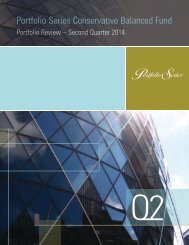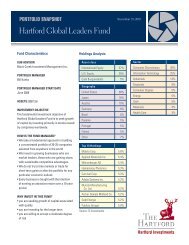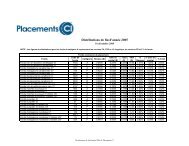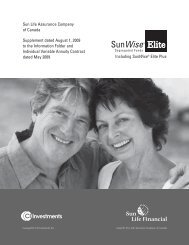January - Early Edition - CI Investments
January - Early Edition - CI Investments
January - Early Edition - CI Investments
- No tags were found...
Create successful ePaper yourself
Turn your PDF publications into a flip-book with our unique Google optimized e-Paper software.
Signature Market RoundupMarket RoundupGlobal outlookGlobal outlookEric BushellSenior Vice-President,Portfolio Managementand Chief Investment OfficerWe exited the third quarter believing that fears of a double-diprecession were overstated and that the bond market, wheredefensive investors had been hiding since the credit crisisbegan, had become fully valued. Since then, the U.S. FederalReserve took out added insurance in November against thepossibility of deflation by embarking on a US$60 billionTreasury purchase program. The dollar weakness associatedwith this second round of quantitative easing (or “QE2”)propelled commodities higher, led by gold, as printing of theworld’s reserve currency can have that effect. Moves higher foreconomically sensitive commodities like copper, oil and coalwere underpinned by real demand and supply disruptions. Inour diversified funds, we prefer to emphasize commoditieswith real uses ahead of gold. Inflation expectations have risenand global real interest rates have headed higher since QE2.In Europe, the temporary fund set up to ensure financialstability fund was made permanent as the European CentralBank pushed Ireland to become the first nation to accept abailout. Nonetheless, discussions over private sector losses ongovernment bonds and bank refinancing challenges elevatedconcerns among investors.The Republican victory in the U.S. mid-term elections wasgood news for business, which continued with the Obamaadministration’s agreement to extend Bush-era income taxcuts and add further tax incentives for business. We believethese measures will be effective in unlocking pent-up hiringand capital expenditure activity in coming quarters. Food andwage inflation pressures throughout developing economiesalso emerged in the fourth quarter, marking an end to theera of global disinflation. Overall, 2011 should see a recoveryin bank lending, consumption and business investment. Inshort, it should be a good year for global growth, and equitiesshould outperform as they did in 2010.Drummond BrodeurVice-President,Portfolio Managementand Global StategistThe outlook for global equity markets in 2011 is attractive.While many structural challenges remain – such as sovereigndebt in developed economies and rising inflation in emergingeconomies – our belief is that these issues will be trumped bythe unfolding cyclical recovery.All signs are that the U.S. economy has re-accelerated andshould continue to see strong private sector-led growth through2011, as companies invest and hire to meet growing demand.Meanwhile, policymakers have made it clear they will nottighten prematurely. The Federal Reserve remains committedto quantitative easing until June, while the necessary fiscalausterity has been deferred to 2012 at the earliest withthe extension of the Bush tax cuts and other measures tosupport employment.Many emerging economies have enjoyed robust recoveries andhave begun to tighten fiscal and monetary policy in response torising inflation. Nevertheless, we do not see this as a threat totheir still strong growth. While we believe Europe recognizesthe need to find solutions to its debt problems, we are less certainthat the same realization exists in the U.S., the world’s largestdebtor nation. The key challenge facing the global economy inthe next few years will be addressing the imbalances betweenthe U.S. and its creditors, led by China. We will be monitoringdevelopments as the world strives to develop a new set of rulesfor international economic engagement.10 WINTER 2011 EARLY EDITION PERSPECTIVE AS AT DECEMBER 31, 2010


